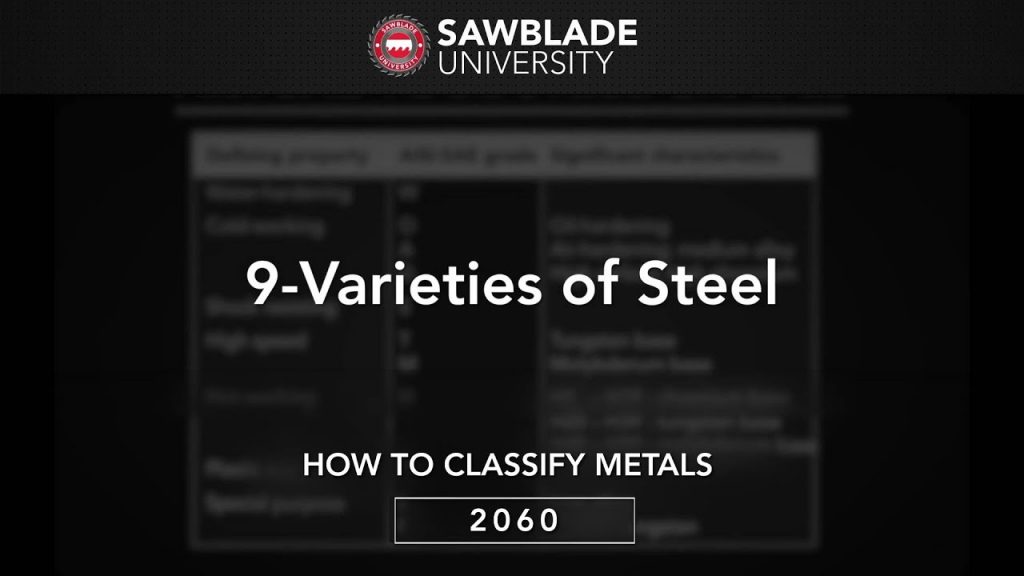Silicon Steel
Silicon Steel Product Guide
Silicon steel is a kind of steel that consists of iron mixed with up to 3.2% silicon by weight. Silicon increases steel’s magnetic conductivity and electrical resistance (the opposite would be electrical conductivity). With this, the electrical resistance in irons may be increased by up to five times when silicon is added. This alteration reduces the eddy current losses of the alloy, which has an effect that is immediately felt in the magnetic core.
Table of Contents
Introduction
Silicon steel, an essential soft magnetic material, has established itself as a key player in contemporary industrial applications. Ranging from small-scale operations in relays and pulse transformers to large-scale use in generators, motors, and transformers, silicon steel continues to grow in importance. Its adoption has been driven by the need for more efficient energy use and the miniaturization of powerful equipment.
Silicon Steel: An Evolutionary Journey
The initial soft magnetic material, iron, came with its share of impurities. However, upon the discovery of silicon’s addition, there was a marked improvement in resistivity, reduction in hysteresis loss, an increase in permeability, and a near-total elimination of aging. Today, we see large quantities of oriented silicon steel primarily in power and distribution transformers. But that doesn’t make non-oriented silicon steel any less important. Non-oriented silicon steel finds its extensive use where low-cost, low-loss material is indispensable, especially in rotating equipment.
Key Properties of Silicon Steels
1. Resistivity
In comparison to iron, silicon steel shows a significant increase in resistivity. This increase reduces core loss by minimizing the eddy current component, hence improving energy efficiency.
2. Saturation Induction
The degree to which silicon steel can be magnetized, or its saturation induction, is another vital property. The higher the silicon content, the lower the saturation induction. It’s a balancing act between maintaining high resistivity and ensuring adequate saturation induction.
3. Magneto-crystalline Anisotropy and Magnetostriction
These properties influence how the material behaves under the influence of magnetic fields and mechanical stress, respectively. While increasing silicon content lowers magnetostriction, the processing becomes more challenging.
4. Curie Temperature
The Curie temperature, which is quite high for iron, can be reduced by alloying elements. However, the decrease doesn’t significantly impact silicon steel users.
Cold-rolled-non-grain-oriented steel (CRNGO)
There is no particular pressing used to adjust the crystal orientation of this silicon steel product (this is the overall texture of the material). An isotropic material is produced from this jumble of unoriented grain (where magnetic properties are omnidirectional). This is the more cost-effective choice, and it is used in circumstances in which cost is prioritized above efficiency and in which the magnetic flux does not need to be kept constant. CRNGO is often found in electric motors and generators that have moving components.
Non-oriented silicon steels don’t require a secondary recrystallization process for their property development, nor is a high-temperature anneal necessary. Hence, the lower limit on silicon is not essential. Non-oriented silicon steels contain between 0.5 and 3.25% Si plus up to 0.5% Al. This addition increases resistivity and lowers the temperature of primary recrystallization.
Non-oriented silicon steels find usage in large rotating equipment, including motors, power generators, and AC alternators. These steels can come in two conditions: fully-processed or semi-processed.
Cold-rolled-grain-oriented steel (CRGO)
The magnetic flux in this silicon steel is steady and directed to the processing. The rolling procedure gave it a highly ordered crystal structure, which can be seen in its appearance. Cold-rolled strips with a thickness of less than 2mm are made from CRGO, which is provided in coil form. First, the coil is rolled out, and then it is cut into the desired shape. This process is repeated for both grain-oriented and non-grain-oriented laminated sheets. This is the motivation for the need of its workability.
The manufacturing of oriented silicon steel requires a more controlled composition and more sophisticated processing. The final texture development process includes a series of careful working and annealing operations, ensuring that the material stays essentially single-phase, particularly during the final anneal. This is because phase transformation destroys the texture.
The silicon content in today’s commercial steel is about 3.25%. Although having more silicon might be favorable due to increased resistivity and lower magnetostriction, this leads to complications in cold rolling.
Applications of Oriented Silicon Steel
Oriented silicon steel is utilized in a variety of transformers and generators. For transformers, factors like economic considerations, transformer rating, noise level requirement, loss requirements, operating density, and core size all play a role in determining the material grade and gauge. As for generators, the steel is used in both steam turbines and water wheels.
Five Tips for Choosing the Right Silicon Steel for Your Application
1. Understand Your Application Requirements
Different applications require different properties. For example, transformers need oriented silicon steel, while rotating machinery might benefit more from non-oriented silicon steel.
2. Consider the Cost
Oriented silicon steel tends to be more expensive than its non-oriented counterpart due to the additional processing steps.
3. Factor in Efficiency
Higher silicon content improves efficiency by reducing energy loss. However, too much silicon can make the steel harder to work with.
4. Think About Size
Large components might be better suited to non-oriented silicon steel, which is less sensitive to mechanical strain.
5. Remember the Environment
The operating environment could influence your choice. For instance, silicon steel with higher Curie temperatures may perform better in high-temperature applications.
Conclusion
| IEC 404-8-4 (1986) | EN 10106 (1995) | AISI | ASTM A677 (1989) | JIS 2552 (1986) | GOST 21427 0-75 |
| – | M235-50A | – | – | – | – |
| 250-35-A5 | M250-35A | M 15 | 36F145 | 35A250 | 2413 |
| 270-35-A5 | M270-35A | M 19 | 36F158 | 35A270 | 2412 |
| 300-35-A5 | M300-35A | M 22 | 36F168 | 35A300 | 2411 |
| 330-35-A5 | M330-35A | M 36 | 36F190 | – | – |
| – | M250-50A | – | – | – | – |
| 270-50-A5 | M270-50A | – | – | 50A270 | – |
| 290-50-A5 | M290-50A | M 15 | 47F168 | 50A290 | 2413 |
| 310-50-A5 | M310-50A | M 19 | 47F174 | 50A310 | 2412 |
| 330-50-A5 | M330-50A | M 27 | 47F190 | – | – |
| 350-50-A5 | M350-50A | M 36 | 47F205 | 50A350 | 2411 |
| 400-50-A5 | M400-50A | M 43 | 47F230 | 50A400 | 2312 |
| 470-50-A5 | M470-50A | – | 47F280 | 50A470 | 2311 |
| 530-50-A5 | M530-50A | M 45 | 47F305 | – | 2212 |
| 600-50-A5 | M600-50A | – | – | 50A600 | 2112 |
| 700-50-A5 | M700-50A | M 47 | 47F400 | 50A700 | – |
| 800-50-A5 | M800-50A | – | 47F450 | 50A800 | 2111 |
| – | M940-50A | – | – | – | – |
| – | M310-65A | – | – | – | – |
| – | M330-65A | – | – | – | – |
| 350-65-A5 | M350-65A | M 19 | 64F208 | – | – |
| 400-65-A5 | M400-65A | M 27 | 64F225 | – | – |
| 470-65-A5 | M470-65A | M 43 | 64F270 | – | – |
| 530-65-A5 | M530-65A | – | – | – | 2312 |
| 600-65-A5 | M600-65A | M 45 | 64F360 | – | 2212 |
| 700-65-A5 | M700-65A | – | 64F400 | – | 2211 |
| 800-65-A5 | M800-65A | – | – | 65A800 | 2112 |
| – | – | M 47 | 64F500 | – | – |
| 1000-65-A5 | M1000-65A | – | 64F550 | 65A1000 | – |
Request for Quotation
Request For Quote

Monday through Friday
8:00 AM to 5:00 PM Central Time
Houston, Texas 77093
Our sawing capabilities include a large range of metals, castings, plastics or molded parts. You can count on Houston Metal Sawing to deliver your parts on time and within budget.





